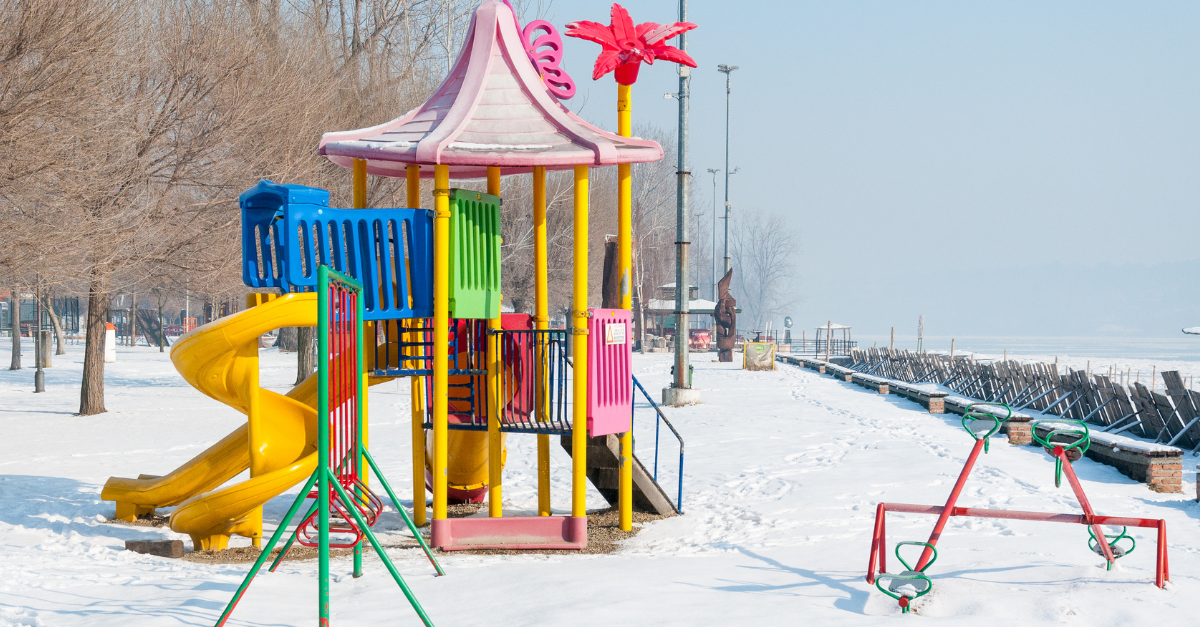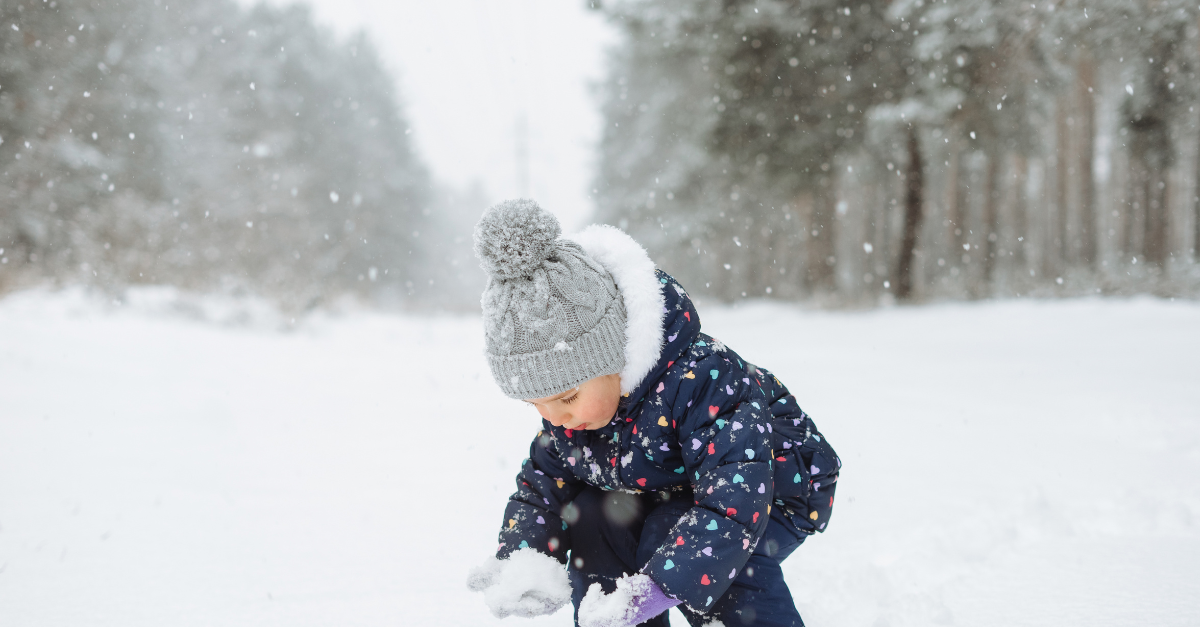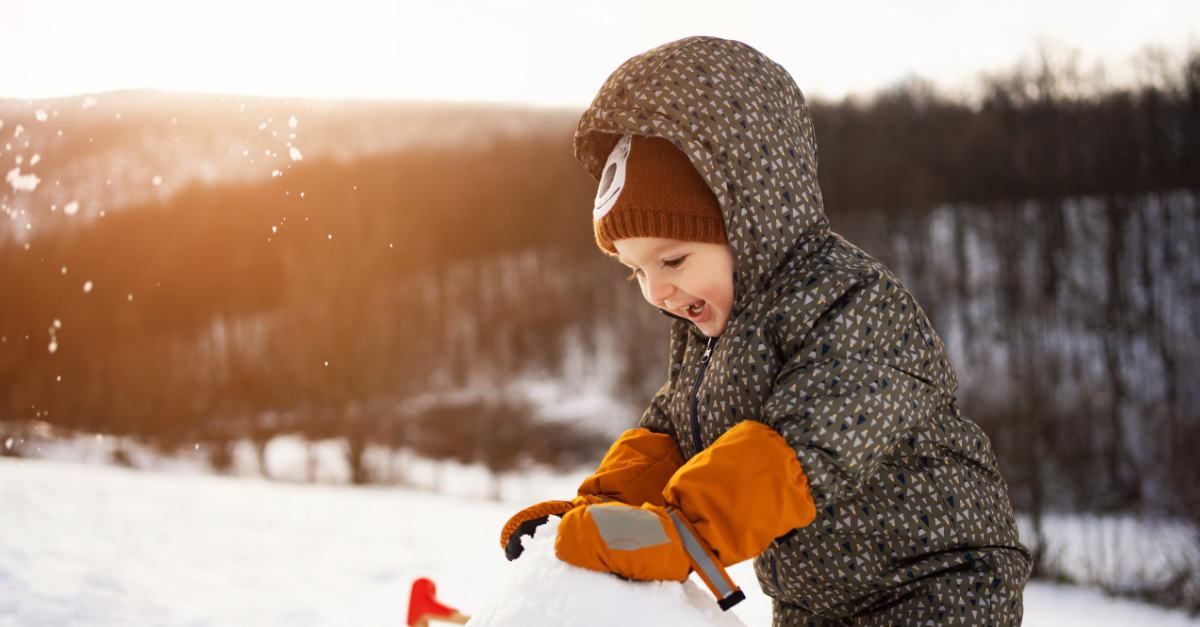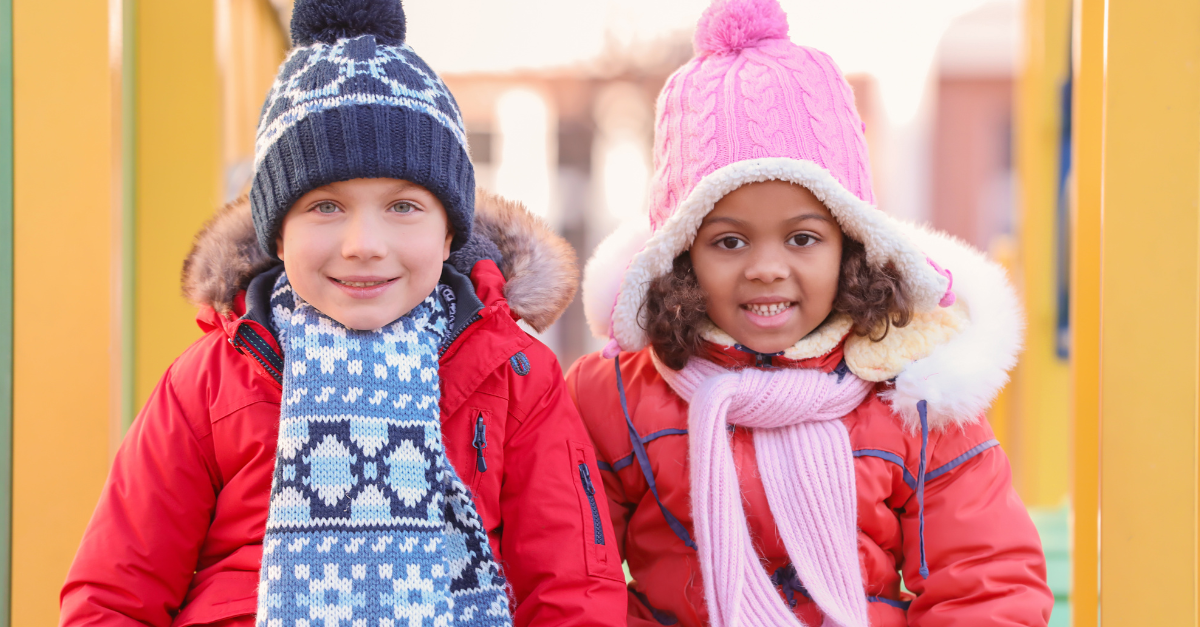Winter sensory activities for preschoolers: exploring child development through outdoor play
Meaningful outdoor learning experiences for preschool curriculum

Sensory play is a dynamic and integral aspect of a child’s developmental journey and a key part of any preschool program. Actively engaging children’s senses, it serves as a cornerstone for fostering not only physical but also cognitive and social development. The intricate interplay between sensory stimulation and the developing brain contributes significantly to the enhancement of the developmental continuum in early childhood. Moreover, the joyous exploration facilitated by child-led sensory activities establishes a foundation for robust social emotional skills, a key component of kindergarten readiness.
As children immerse themselves in the tactile experiences of various textures, scents, and sounds, they embark on a path that intricately intertwines learning with the sheer pleasure of discovery. Not to mention, the invigorating effects of these activities happening in the fresh winter air, providing an enriching and revitalizing learning environment for children.
Furthermore, the profound impact of sensory activities extends beyond the realms of cognitive development. These activities play a pivotal role in honing essential skills that lay the groundwork for a child’s overall well-being. From refining fine motor skills through activities involving touch and manipulation to nurturing literacy skills and social interactions during collaborative play, and building gross motor skills as they explore with their bodies, sensory engagement acts as a holistic developmental catalyst in early childhood education.
As children actively participate in the exploration of their surroundings, they not only refine their physical dexterity but also develop vital social skills. The playground, or outdoor space, is a sensory-rich environment that becomes a natural arena for high quality curriculum, allowing early childhood educators to engage children in meaningful learning experiences that encourage children in all areas of development. Developmentally appropriate outdoor sensory play also encourages children’s independence and agency as they begin to understand their place in the world, helping them to hone in on their personal identity development and self care skills. Outdoor sensory play is a natural learning environment for cooperation, communication, and teamwork, setting the stage for a well-rounded preschool curriculum.
The beauty of sensory play is accentuated when seamlessly integrated into your lesson plans with the wonders of outdoor exploration. Nature, with its ever-changing landscapes and seasonal transformations, provides a perfect backdrop for multi-sensory learning in preschool curriculum. Each season brings forth a tapestry of unique experiences, and winter, with its crisp air and glistening snow, offers a canvas for enriching sensory adventures.
The following is a curated collection of outdoor winter activities meticulously designed to captivate and stimulate children’s senses, and reach learning objectives through joyous and inclusive methods. These activities not only align with the principles of child-led exploration but also harness the inherent wonders of the winter season to create memorable and meaningful learning experiences.
Outdoor play activities for preschool curriculum

Ice Sculptures: Embark on a frosty adventure with your preschool curriculum by inviting individual children to gather an array of natural treasures from the great outdoors – think seeds, twigs, pine needles, pinecones, and more. Together, place these fascinating finds inside shallow containers, carefully filling them with water before leaving them to freeze overnight. The next day, watch as the ice sculptures are delicately released from their frozen molds, placed outside, and presented to the eager children for an exploration fest. Encourage them to touch, observe, and engage freely with these unique creations, fostering a sensory experience that intertwines nature’s wonders with the magic of winter.
Snow Sand: Transform the winter wonderland into a sandy paradise for preschoolers by providing them with sand or beach toys. Encourage them to explore the powdery snow in lieu of sand, prompting questions about the similarities and differences between the two. Can the children construct intricate structures using the familiar sand toys in this new, snowy terrain? This activity not only sparks creativity but also invites critical thinking as children explore the tactile nuances of snow and sand, all while embracing the joys of winter play.
Color Find: In the midst of winter’s white landscape, embark on a colorful journey with preschoolers. Challenge them to seek and gather natural objects of a specific hue, transforming the snowy canvas into a vibrant palette. As children collect items, foster discussions about the varying shades within a color. Does the snow-covered ground reflect a different shade than the pine needles or twigs? After this color expedition, invite the children to freely immerse themselves in play, weaving a tapestry of exploration and color appreciation amidst the winter backdrop.
Ice Crystal Study: Ignite curiosity in preschoolers by providing them with magnifying glasses for an up-close and personal exploration of snowflakes and frost. Encourage them to observe, discuss, and marvel at the intricate details. Are the snowflakes uniform in size, or do they showcase delightful differences? Challenge the children to identify matching patterns and textures in the frost, fostering not only scientific observation but also an appreciation for the delicate beauty of winter’s frozen artistry.

Snowy Sounds: Delve into the auditory wonders of snow with an enchanting storytelling session featuring “Ten Ways to Hear Snow” by Cathy Camper. Following the tale, step outside with an assortment of child-sized shovels, brooms, and buckets. Engage preschoolers in a delightful exploration of snowy sounds – how might they create a symphony using these tools? Encourage them to experiment, fostering a playful ambiance where the sounds of winter become a canvas for their imaginations. Consider other items for sound exploration, encouraging an immersive and sensory-rich experience.
Whispering Snow: Elevate the winter experience by blending mindfulness with sensory exploration. Invite preschoolers to participate in rounds of belly breathing or square breathing, cultivating a sense of calm amidst the winter landscape. Encourage them to pause and listen, noting the subtle sounds of the season. Did they notice these sounds before, or does the mindful moment unveil hidden winter melodies? This integration of mindfulness and sensory engagement offers a serene yet immersive experience, connecting children with the soothing whispers of winter.
Pine Exploration: Transport preschoolers into a fragrant world of discovery as they explore the textures, scents, and mysteries of pinecones, pine needles, and twigs. Whether gathered from nearby pine trees or acquired from local craft stores, these natural treasures hold a wealth of sensory exploration. Encourage children to notice the varying textures, inhale the earthy aroma, and investigate what happens when these natural objects are gently squeezed or carefully broken apart. Providing gloves ensures a safe and tactile exploration, allowing preschoolers to unravel the secrets held within the folds of winter’s piney offerings.
Wintery Kitchen: Extend the allure of mud kitchens into the winter season, transforming the outdoors into a wintery kitchen wonderland. Equip preschoolers with kitchen utensils – baking pans, bowls, measuring cups, and more – and invite them to explore and create amidst the snow-covered landscape. Encourage the integration of other natural objects such as pebbles, leaves, and twigs into their culinary concoctions. This winter-themed kitchen adventure not only fuels creativity but also introduces the concept of transformation as children combine the elements of nature to craft their imaginative, icy creations.
Additional Considerations

When building sensory play activities into your lesson plans, a key principle is recognizing the intrinsic value of child-led exploration. Children learn best when placed at the helm of their sensory adventures. In child care, educators and caregivers can empower younger children to navigate their unique curiosities and preferences, allowing them to reach learning objectives and build on developmental domains in their own way.
Creating an environment that invites exploration involves thoughtful invitations and setups that pique the interest of children. These invitations serve as pathways to discovery, allowing little ones the time and freedom to engage with their surroundings on their terms. The essence of child-led play lies in the spontaneity and individuality it encourages, shaping a rich and personalized sensory learning experience.
Flexibility emerges as a guiding principle for any childcare curriculum when early childhood educators are embarking on the journey of sensory play. Recognizing and embracing the inherent unpredictability of children’s responses when building out lesson plans is crucial, and understanding that learning objectives can be a achieved through numerous avenues. Children, in their diverse ways, might not always follow a preconceived script, and that’s perfectly alright.
Intentional learning experiences in early childhood education
The true measure of success lies not in conforming to expectations but in acknowledging and valuing the uniqueness of each child’s exploration. Flexibility in approach allows educators to adapt and tailor activities based on the evolving dynamics of the children’s engagement, fostering an atmosphere of acceptance and encouragement and a safe classroom community.
To curate truly enriching sensory experiences in a preschool program, it’s essential that your lesson plans strike a balance between familiarity and novelty for younger children. Understanding and incorporating children’s current interests lay the groundwork for engagement, while introducing new experiences sparks curiosity and broadens their sensory horizons. This delicate interplay within a childcare curriculum ensures that sensory activities remain both relevant and stimulating.
The goal is to create a developmentally appropriate child care environment where children feel a sense of comfort while also being gently nudged towards new realms of exploration. By weaving together the known and the unknown, educators craft a sensory landscape that captivates, educates, and welcomes all children in early childhood education.
Elevate your quality of care and teaching with ready-to-use, developmentally appropriate lesson plans and engaging activities, delivered monthly and easily accessible from right within the Lillio app. Learn more here.
Andrea Ehlis-Chang is a curriculum writer for FunShine Express where she develops content for the Fireflies preschool curriculum and trains on various topics in early childhood education. Prior to joining FunShine, Andrea was an elementary classroom teacher and a preschool through 5th grade reading interventionist. She is certified in the Orton-Gillingham method through the Dyslexia Training Institute. Andrea is a firm believer in the necessity of foundational learning opportunities delivered through quality curriculum. She believes the most powerful learning moments are found in play and joyful interactions.
More by Andrea
Andrea Ehlis-Chang
February 5th, 2024
9 mins
Related Articles

The Benefits of Loose Parts Play for Young Children
December 10th, 2025 | Maddie Hutchison

